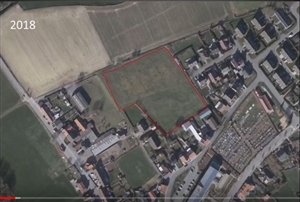Remembering WWI's Hill 80
Archeologists are gingerly and respectfully exploring what is known as Dig Hill 80 in Flanders, Belgium today.In 1914 invading Germans and Bulgarians surrounded a tiny, bucolic, village on a hill 80 meters high and and occupied it. The name of the village was Wytschaete. This village was defended by British & French forces as well as the civilian male occupants and their families. The civilians were very unfriendly to the invaders too. Letters home from the victorious Bulgarian and German soldiers described how they were often repulsed or took heavy losses from the defenders when they tried to clear the village house by house. So they barricaded the houses and other buildings, then set them all afire with the various occupants still inside. The fighting, screaming and dying lasted for 3 days. Afterwards the Germans and Bulgarians built a fortress wall around the smouldering village
The site offered an excellent observation of nearby Ypres and the German forces wasted no time bringing in their best optics and using the site as both an artillery observation point and also their fortress. Elaborate trenches and underground structures were built as part of the defense.
For the next 4 years every day artillery shells landed there or were launched from there. There were repeated major unsuccessful attempts to recapture the area. By 7 June 1917 British sappers had succeeded in tunneling secret tunnels under the German walls and they then placed 900,000 pounds (450 tons) of high explosives in their man made caverns 75 feet down under the fortress. At 3pm that day they detonated them and made the largest (until then) conventional explosive blast in history. The fortress vanished along with many of the occupants and the British moved in and occupied the torn earth and rubble.
Fighting continued and in April of 1918 the Germans succeeded in retaking the site and began re-fortifying it. Only in September 1918 when the Germans pulled back did the fighting there end when the British again reoccupied the site.
At least a full regiment of men who died fighting inside those walls to capture or defend it on behalf of one side or another now lay where they fell (along with whatever villagers who were been trapped there by the events) or were buried or burnt alive. Over 100 years later still nothing remains above ground except a few bricks. The bones, artifacts and unexploded artillery shells lay below.
the site today.
A cloud funded, multi national group of archaeologists, both amateur and professional is now very carefully and respectfully excavating the old fortress grounds to preserve for history whatever they can about the people who died there.
Here is a release at seminar of their first report.

